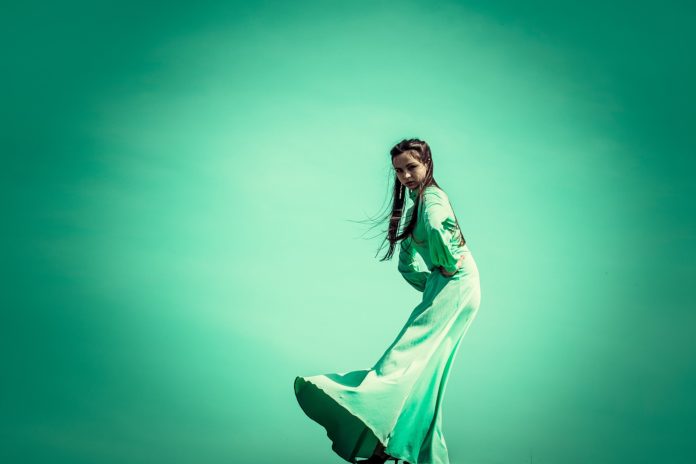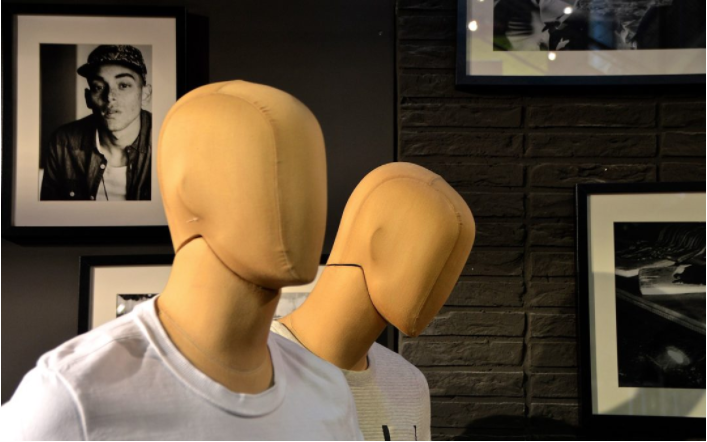
The fashion industry is often seen as vapid, superficial to the point of parody (and it often is parodied). But fashion is simultaneously a reflection of society’ social, cultural, and economic milieu; it captures, perhaps more than anything, the look, feel, and spirit of the times – there is no more identifiable zeitgeist than fashionable clothing, no better, or easier, way to identify a generation, or an era in history than by what people are wearing. The poodle skirts of the 1950’s, the Oxford bags of the 1920’s, the acid wash and tie dye of the early 1990’s, etc.
Fashion then expresses both modernity and eternity: It is something that identifies the now, and subsequently stays rooted firmly in history as an emblem of the people, the place, the time.
As Coco Chanel said, “Fashion is not something that exists in dresses only. Fashion is in the sky, in the street, fashion has to do with ideas, the way we live, what is happening.”
Or, as Virginia Woolf, one of the 20th Century’s most-beloved playwrights, said, “Vain trifles as they seem, clothes have, they say, more important offices than to merely keep us warm. They change our view of the world and the world’s view of us.”
As art, as commerce, as inspiration, as record of the way people think, move, live: Such is fashion.
Fashion is Art
A designer’s expression? Or, a creation which inspires thought, feeling, movement? It is also perhaps the most far-reaching art form we have. Referring back to the Coco Chanel line quoted above, style is, in a word, everywhere. And it’s something that you choose to wear; that becomes a part of you. Your clothing is a representation (often in ways unrealized) of yourself.
It’s also something to be admired as any art is: In the same way our classic painters broke the molds, creating something new to challenge us and make us see the world in a new light, so do many designers attempt to do the same thing.
But it goes perhaps even one step further. When art and aesthetics are applied to everyday life. When your running shoes or workout gear gets the artists’ treatment as has become increasingly popular with cross-over artists like Kanye West and Pharell Williams. It creates a world where art and function not only coexist, but become necessary.
Wearable art; clothes; our choices create a moving canvass out of the world around us.
Fashion is Business
And the bottom line? What if people aren’t buying art? Or interested in style? Fashion is, of course, pure-and-simple luxury on some level – it’s hard to justify spending hundreds, or thousands, of dollars on the newest suit, the latest sneaker drop, a custom dress by Tom Ford, the collaboration between Gucci and Supreme.
It’s certainly a for-profit industry that leaves many people out in the cold.
We’ve made the argument that fashion is art. But where does one draw the line between art and commerce? Especially as it pertains to something as complex, with as many materials, and as much marketing/branding/selling as style?
As with any commerce, the bottom line at some point becomes more/most important.
In the last thirty years, for example, the luxury industry has been completely focused on profitability and quality has become a secondary objective for luxury-brand tycoons, i.e. the production of the finest merchandise is no longer their main objective.
And the trickle-down effect of the fashion industry still impacts the Milan high fashion is reflected, at some point, on the racks at Macy’s.
But it’s not just about making clothes. And the cost of a piece, the $$$ involved doesn’t necessarily translate into longevity, or brand loyalty, or lasting impact alone – price point certainly doesn’t dictate solely quality of product, or how in-style it is or will remain.
But what happens when the Queen of England wears a particular dress, or when rabid “sneakerheads” fight to get the limited-release pair of Jordans or Yeezy shoes? The business side is so successful that a brand can enjoy both mainstream success and a devoted (to put it mildly) cult following. Wearable art it may be, but it’s also a 1.2 trillion-dollar global industry.

Fashion is Global
More than just clothes, and more than just a single artists’ ideas and inspiration: Fashion plays a role in society beyond art and commerce. A mate role that plays right into the recent and ongoing debate on isolationism vs. globalism, immigrants vs. no immigrants, and “America first.”
Fashion has always been defined by immigration. An article published in Highsnobiety in 2016 discusses the role of fashion in the recent immigration debate,
“By the 1980s, American designers like Bill Blass, Oscar de la Renta, and Calvin Klein had become household names—but one thing remained constant: A skilled factory workforce comprised primarily of immigrants and their descendants… That is to say, the reality of what “made in America” looks like is much different than the quixotic ideal.”
One of many threads of our cultural fabric impacted by immigrants? Yes. But more than that, an important examination of how we, every day, sometimes (often) without realizing it, feel, see, touch, live the contributions of our neighbors from other countries. And they are our neighbors. If fashion has proven anything, it’s that borders only exist in the mind.
The fashion/clothing/garment industry, outside of tech, has been and continues to be the industry most impacted, influenced, and supported by immigrants, foreigners, global thinking.
The H-1B visa, a so-called “genius” visa, applies to highly-skilled foreign workers in the United States, and is limited to 65,000 per year. While nearly 70% of these have traditionally gone to Indian immigrants to bolster the tech industry, they also go to industries like humanities and the arts, in which fashion has played one of the largest roles.
We wear the clothes of designers from Japan to South Africa. The clothes themselves are produced; are stitched, sewn, and shipped from countries throughout the world. We tune into Milan Fashion Week, New York Fashion Week, Paris and London.
To what end is still unclear – still rooted in inequalities and disparities as so many of our industries are. But, perhaps this is the biggest reason why we need to understand not just that fashion (and the clothes we choose, or choose not to, wear) does have an impact on our society day-to-day and in the future, but also why.
We celebrate styles from all over the world. From the Far East, to South America, to the frozen north and throughout the west. Everyone is included.
Except, of course, the nudists.
















